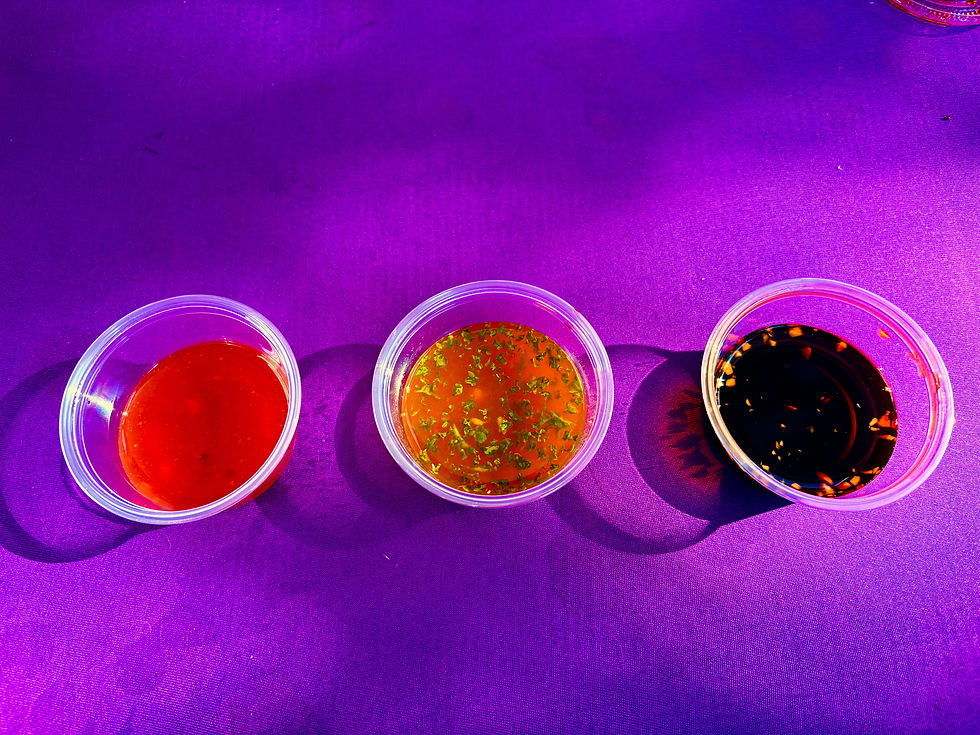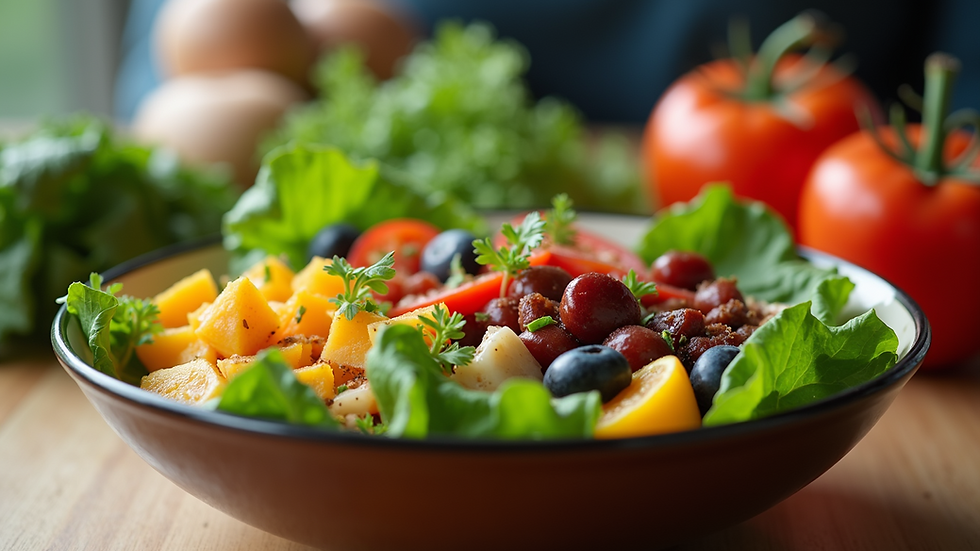What Makes the Perfect Lumpia?
- Love Lumpia ❤️

- May 26
- 4 min read
Lumpia is a beloved Filipino dish that has captivated food lovers around the world. Known for its crispy exterior and savory filling, it's a staple at parties, gatherings, and family dinners. But what truly makes the perfect lumpia? In this blog post, we will dig deep into the details, revealing essential criteria for achieving delicious lumpia that delights your taste buds and impresses your friends and family.
Perfect Lumpia
The journey to making the perfect lumpia begins with the wrapper. The ideal lumpia wrapper is thin, flexible, and holds the filling without tearing. Traditional lumpia uses spring roll wrappers, but you can also use lumpia wrappers available in Asian grocery stores. The key is to keep them fresh and moist.
To maintain moisture, cover unused wrappers with a damp cloth. This prevents them from cracking while you work. When wrapping, make sure to roll tightly but not excessively, as this may rupture the wrapper during frying.

By using high-quality wrappers and practicing rolling techniques, you lay the groundwork for a perfect lumpia experience.
The Filling: A Symphony of Flavors
Another important aspect of perfect lumpia is the filling. Traditionally, lumpia is filled with a mixture of ground pork, shrimp, and vegetables, but the variations are endless.
One classic filling recipe includes sautéed garlic, onions, carrots, green beans, and bean sprouts, mixed with ground meat. You can also incorporate other proteins like chicken or tofu for a vegetarian option. The flavor profile can be enhanced with soy sauce, oyster sauce, and various spices to elevate the overall dish.
To achieve that perfect balance of flavors, remember to season well. You want to ensure that every bite presents a burst of umami goodness. It’s also essential to pre-cook fillings to release moisture, preventing the wrapper from becoming soggy.

Statistics show that over 80% of lumpia enthusiasts consider filling quality as the top factor in their enjoyment of this dish. So take your time crafting the perfect mix!
Cooking Method: Frying to Perfection
Once your lumpia is wrapped and your filling is ready, the next challenge arises: cooking. Frying is the most common method chosen for giving lumpia that iconic crispy texture. But how do you achieve the right amount of crispiness without burning?
The answer lies in temperature control. The ideal frying temperature should be around 350°F (175°C). To test this, drop a small piece of wrapper into the oil. If it bubbles and rises to the surface immediately, you’re good to go. Fry in small batches to maintain oil temperature and ensure even cooking.
Another crucial tip is to choose the right oil. Oils with high smoke points, such as canola or peanut oil, work best for frying lumpia. These oils not only prevent burning but also enhance the flavor without overpowering the dish.

These simple steps can make the difference between an average lumpia and one that’s absolutely perfect!
Dipping Sauce: The Final Touch
No lumpia experience is complete without an accompanying dipping sauce. A popular choice among Filipinos is a sweet and sour sauce or a vinegar-based dip. These sauces add a contrasting flavor that takes your lumpia to the next level.
To prepare a sweet and sour sauce, combine sugar, vinegar, ketchup, and soy sauce in a saucepan. Heat the mixture until the sugar dissolves completely, creating a smooth sauce. For a vinegar-based dip, simply mix vinegar with garlic and chili to create a simpler yet delicious dipping option.
Offering a variety of sauces allows your guests to choose their favorites, enhancing their overall experience of your homemade lumpia.

Perfecting Your Technique: Practice Makes Perfect
Crafting the perfect lumpia requires a bit of practice. Don't be discouraged if your first batch doesn’t turn out as expected. The art of lumpia-making becomes easier as you go.
Start small—experiment with different types of fillings and wrappers, and try out various cooking techniques. Get feedback from family and friends. Their insights may help you refine your process.
Don't be afraid to spice up traditional recipes. Adding unique ingredients can give your lumpia a signature twist that sets yours apart from others. Who knows, your creation might just lead you to discover the "best lumpia near me"!
Enjoying Your Lumpia
After your hard work, it's time to enjoy your homemade lumpia. Serve them hot and fresh, perhaps with a side of your favorite beverage. Remember, the presentation matters too! Use a clean serving platter and garnish with fresh herbs for an appealing touch.
Whether for a party or just a family gathering, lumpia is sure to be a crowd-pleaser. Gather your loved ones, encourage everyone to dig in, and savor the delicious flavors together.
Incorporating these tips into your lumpia-making process will elevate your dishes and create memorable experiences for everyone involved. Have fun experimenting and sharing your creations!
By mastering the key elements of perfect lumpia—wrappers, fillings, cooking methods, and sauces—you’ll be well on your way to creating your signature dish. So gather your ingredients and get cooking today!




Comments